I love train travel, anytime, anywhere in the world–Africa, Europe, USA, Japan and Central Australia. One day I will board the Orient Express and travel across Europe…Venice, Budapest, Paris and London…for now we travel two hours on Italia Rail and arrive in Florence early afternoon.
We cab it to Santo Stefano Piazza, a little square just off Via Por Santa Maria and five minutes’ walk from Ponte Vecchio. The cab driver calls the rental office. We wait for someone to let us into the apartment.
She is there in ten minutes. Our apartment is upstairs but this time there is a lift. It is lovely, two bedrooms, kitchen, lounge and a view onto the cobblestone road, and, at a stretch to the beautiful Ponte Vecchio.
We drop our things and take a walk. We need groceries although I have brought rice cakes and vegemite because I know Virginia loves them. We also have to investigate this Renaissance city. I have never stayed overnight in Florence. We have seven days to take it all in but nary a moment to waste.
We walk across Ponte Vecchio and keep walking. Past shoe shops, handbag shops, clothing shops, and of course the jewellery shops on the bridge. We stop outside Pitti Palace. We have pre-purchased tickets for the Palace on Thursday.
It is getting late so we grocery shop and walk back to the apartment. But we are in Florence, who can sit in an apartment when there is so much to see outside. With warm scarves and thick jackets we head out again, this time we go right and right again and are in Piazza dell Signoria. Even with the cold evening the place is alive. Palace Vecchio is in our forefront and the Uffizi Gallery to our right.
In the beautiful evening light I see Cosimo Pater Patriae and Lorenzo il Magnifico, the Poet Prince. Again a must read of Kathleen McGowan’s and one of the reasons I am here. They stand amongst Dante, Galileo, Michelangelo, and Donatello. To know the history of these great men has brought them alive for me. They are real people, people who made a difference in the world, not static statues. They each have a story; my appreciation for those stories knows no bounds.
In the pavement of the piazza, not far from Neptune, is a round plaque marking the place where Girolamo Savonarola and his two brother friars were hung then burned in 1498, see the Poet Prince or check out ‘the Bonfires of the Vanities.’
We walk back home for a nightcap. It is cold…but we are in Florence…living and experiencing the Renaissance Perio
Tuesday
Today we are visiting the Galleria dell’ Accademia. Our tour starts at 10am. It is a short walk. We follow the map and arrive with time to spare.
From outside, the Galleria is unremarkable, but step inside and you enter a time in history when the powerful Medici family commissioned and created works of art by Florentine artisans. A time of talented enlightened minds and creative genius.
First we come across Giambologna’s Rape of the Sabine Women. This is a plaster cast model as the original is located at the Piazza della Signoria. Carved from a single block of marble Giambologna’s sculpture represents the abduction, in 750BC, of the Sabine women by Romulus and his followers. Considered a masterpiece, the sculpture was originally meant as an exercise to demonstrate the artist’s skill.
I am looking for Alessandro Botticelli’s artwork. I don’ have to go far. A large number of paintings hang on the four walls surrounding Giambologna’s sculpture. Here I find Botticelli’s Madonna of the Sea and Madonna and Child. Finally I am in the presence of a Renaissance master. Read ‘The Poet Prince’ to understand my obsession.
Next we visit the Music Room, forty instruments belonging to the Luigi Cherubini Conservatory. We see cellos, Harpsichords, the original Stradivari red spruce and maple wood Medici violin and discover the primary role music played in the Medicean Court. The Medici in their villas and towns, arranged opera, theatre and classic music festivals, which expressed a rich cultural atmosphere in this Renaissance era.
The Hall of the Prisoners awaits us…Michelangelo’s Slaves. Are they in an unfinished state, said to represent the eternal struggle of humans to free themselves from their bonds or was Michelangelo giving us the freedom to assign our own meaning.
The four beautiful statues are named The Awakening Slave, The Young Slave, The Bearded Slave and The Atlas. Their magnificence is in their various stages of incompletion, as they appear to struggle to free themselves from the block of marble. In studying these statues you notice Michelangelo’s understanding and interpretation of the human anatomy. Each of the Prisoners poses, on one foot, gives them an appearance of transmitting motion and emotion. Beautiful, inspiring a wonder of such unmitigated talent…where are the 21st Century sculptors?
Look up Virginia’s says. I know what she means. I saw him as we entered the Hall of the Prisoners. He is the archetype of classic male beauty. The original Renaissance Man. He stands at 5.17 metres, a standing male nude carved from one block of marble, carved by the genius of Michelangelo, perfect in all dimensions.
For three hundred and fifty years David, the biblical hero, stood in Piazza dell Signoria in front of Palazzo Vecchio. In 1873 David was moved to the Galleria to protect him from damage and the weather. We marvel at his perfect symmetry, his abs, his face, his expression and all other parts.
We leave the Galleria and have lunch in a 16th Century café. We have an hour until we meet our guide for a walking tour of Florence followed by a tour of Uffizi.
We meet the guide outside the Hard Rock Café. He is a man of our age, a little standoffish. Not sure why, maybe he thinks we know nothing about Florence and its history or does he think we aren’t really interested in what he has to say. We ask questions, chat about places we have visited and he seems to relax.
We visit the Baptistery of San Giovanni and the Cathedral of Santa Maria del Fiore. We see the giant dome made by Brunelleschi. We walk down back lanes, touch the nose of the bronze boar, the Porcellino fountain and cross Ponte Vecchio. The bridge has survived floods and partial destruction during World War II.
He leaves us beside the Arno and arranges to meet us outside the Uffizi in an hour. We stop for a coffee then stroll by the river window-shopping, enjoying the ambiance of Florence. Back at the Uffizi we buy our tickets and head on inside. I am excited…there is a Botticelli Room I have wanted to visit since reading The Poet Prince.
Virginia has studied Art and Opera and has visited Art Galleries around the world and attended Operas in Germany, Paris, Austria and London. For me this is a new era, I am only now learning to appreciate the works of the masters. Opera, I have always been a follower, but art, this is a new experience.
We start in the Vasari Corridor, an enclosed passageway joining Palazzo Vecchio with the Uffizi. The corridor follows the north bank of the River Arno, crosses the river at Ponte Vecchio and finishes at Palazzo Pitti. We stroll past Michelangelo, Rafael, Spinello but we stop in Botticelli’s Room. I am overwhelmed, silenced by their beauty, Primavera, The Birth of Venus and the Adoration of the Magi. This is what I came to see, to experience…I don’t want to leave. I want to look in the eyes of Venus and transport back in time to the Medici Palace and discover what was in Botticelli’s mind as he painted these masterpieces. But there is no time warp here and reluctantly we move on.
Today has been huge. My hip hurts, my feet ache but it has been worth the effort. We want to come back Thursday and walk the corridor all the way to Pitti Palace. Unfortunately we soon discover the Corridor will be closed after today until spring. Does this mean I have to come back?
It is dark when we exit and unknown to us have come out on the other side. We walk away without checking and are soon lost. Thank goodness for Google. We eventually find our way home and decide to have dinner in tonight…bread cheese wine olives artichokes.
Later this evening we are going to St Mark’s English Church for a performance of Italian love duets. St Marks was established as a place of worship in 1881, built within a Medici palace from the 15th Century. The church is across the river. We walk over Ponte Vecchio and follow google maps. The church is beautiful, pinks and creams and flowers. We are a small group within intimate surroundings. We sit in the front row. The piano player takes his seat and three singers walk from the back of the church. The music soars, the performers are only metres away and we are enthralled. We pinch ourselves.
Much later we walk home…the streets are quiet but we feel safe.
The end to a most amazing day.

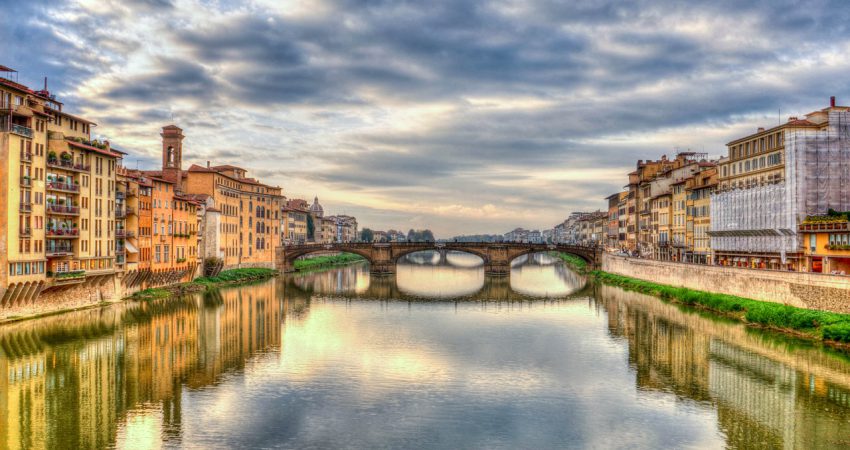
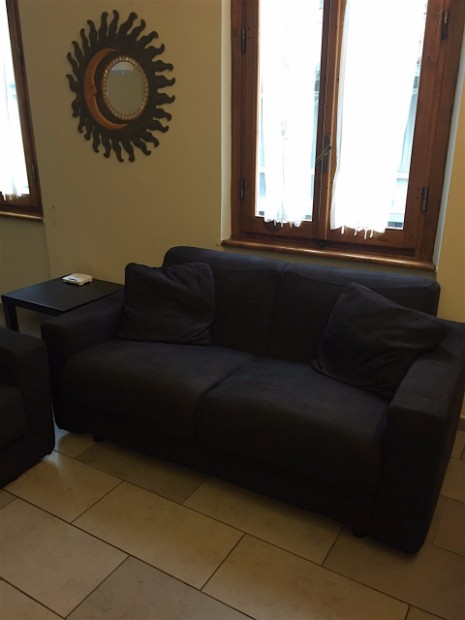
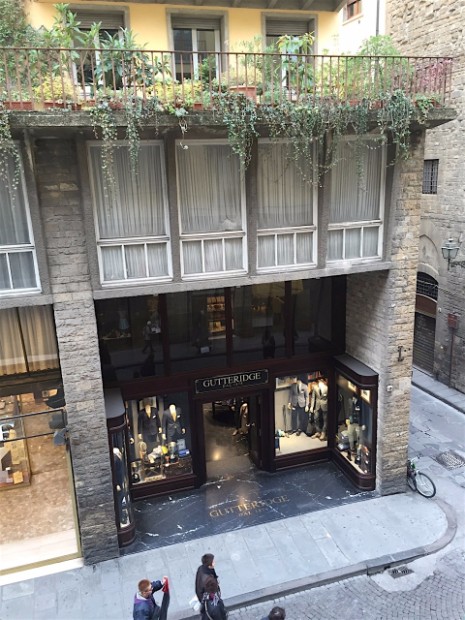
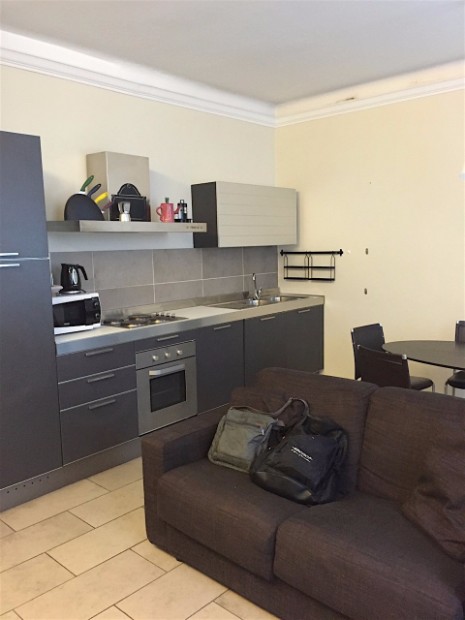
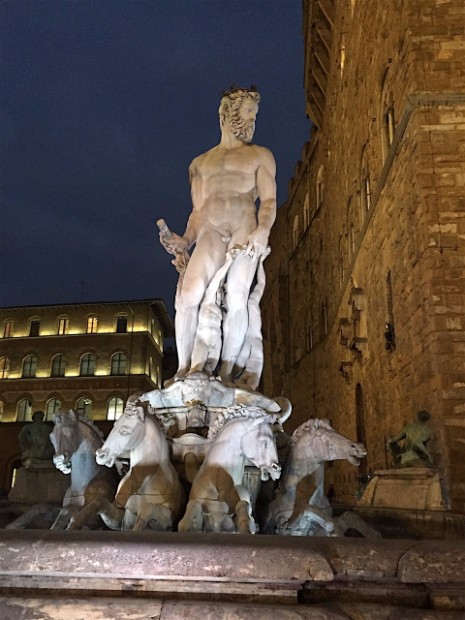


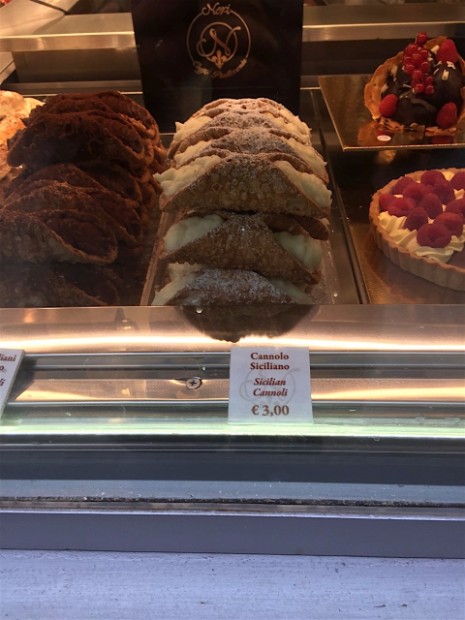
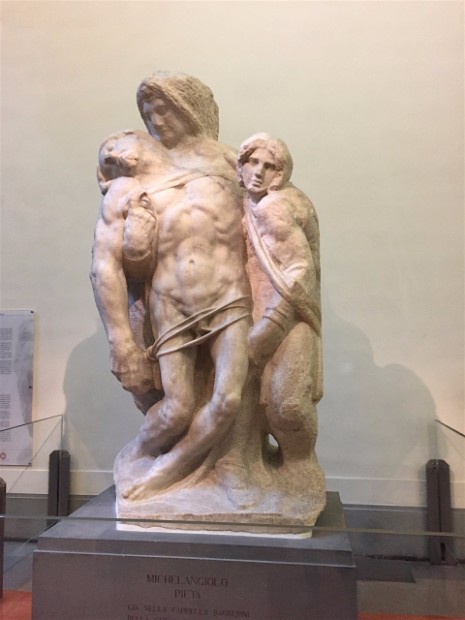

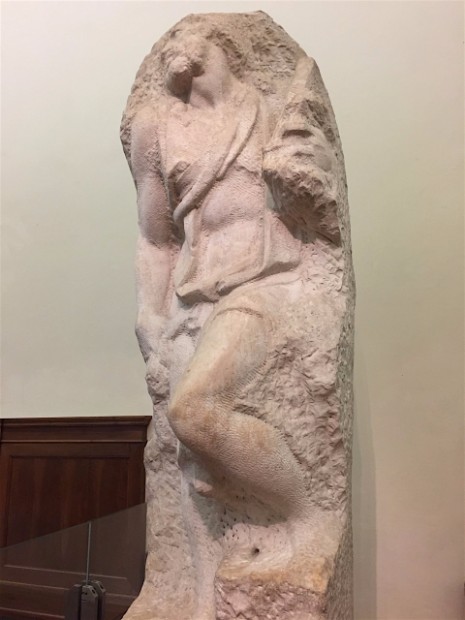
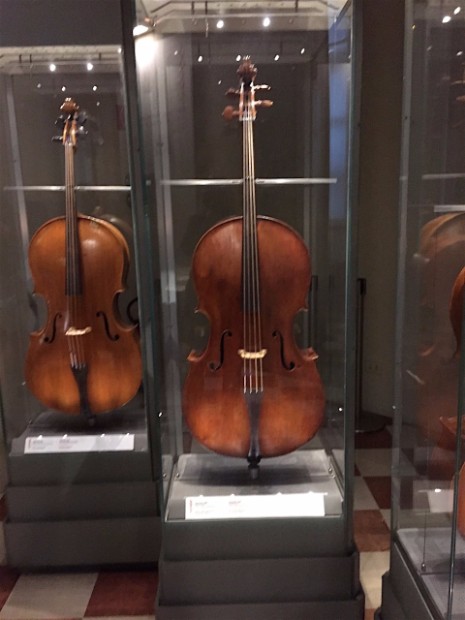
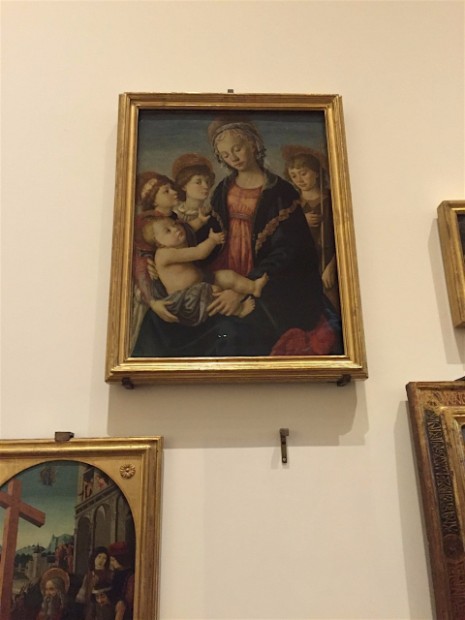
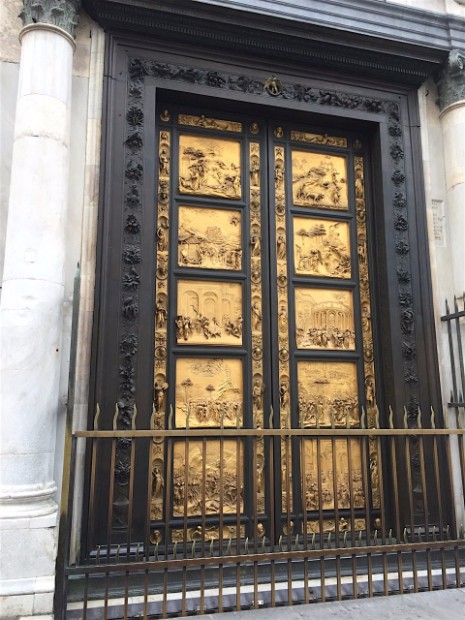

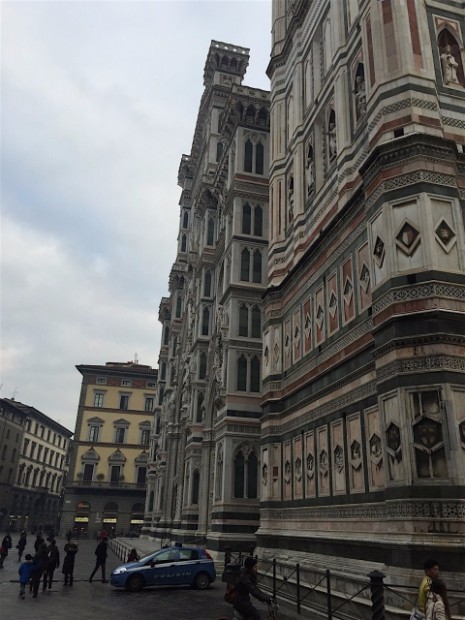
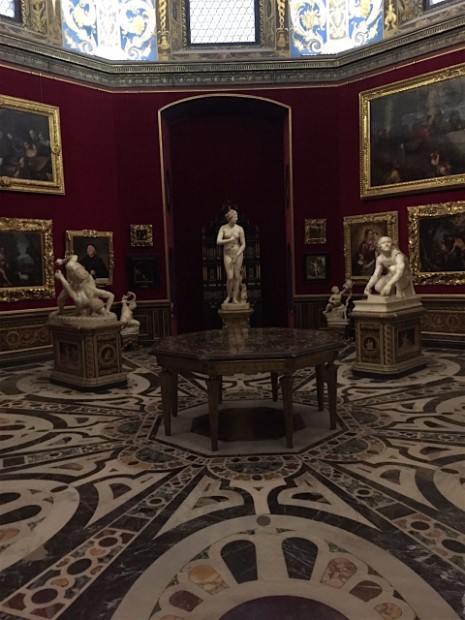
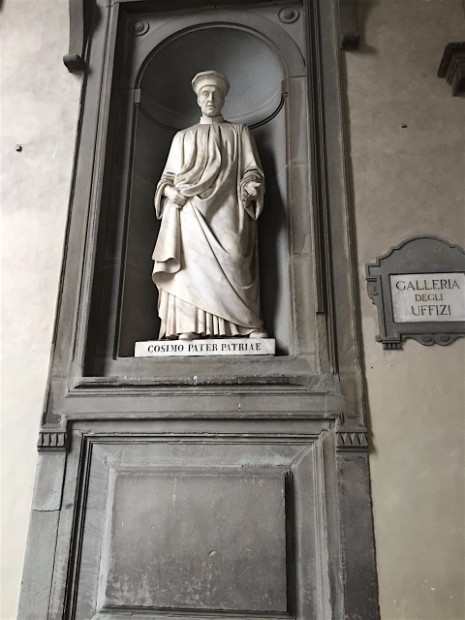
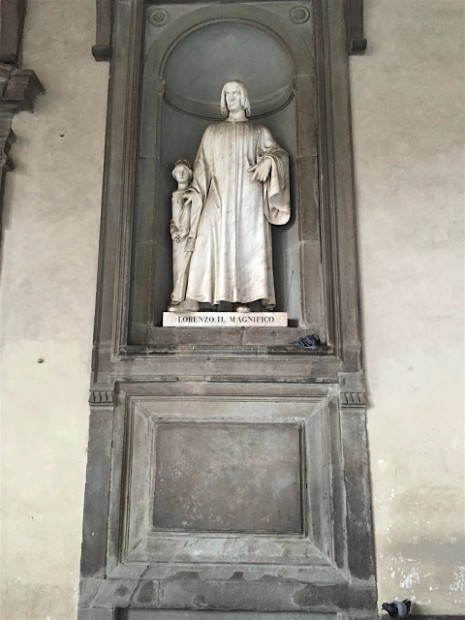
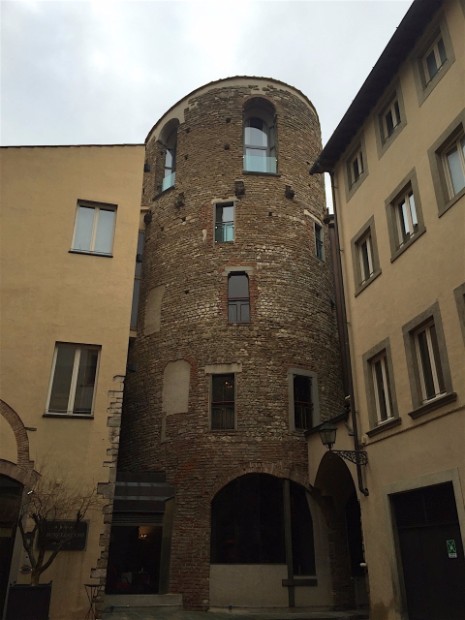
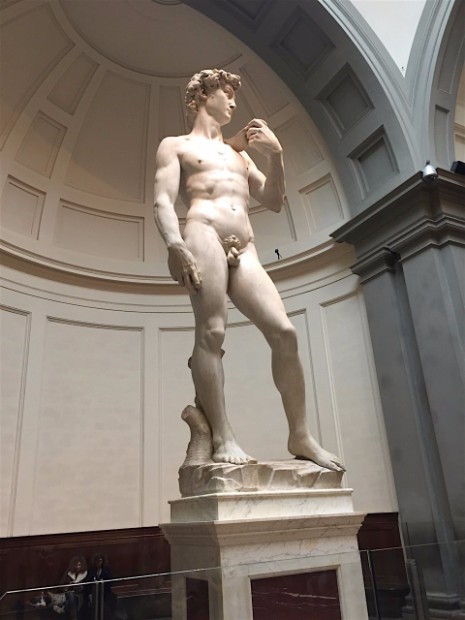
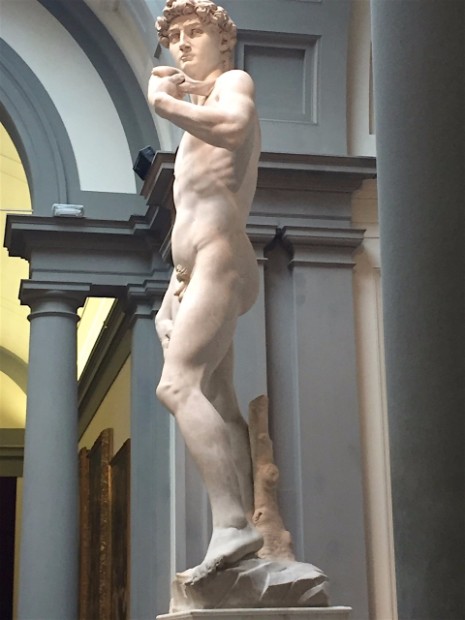
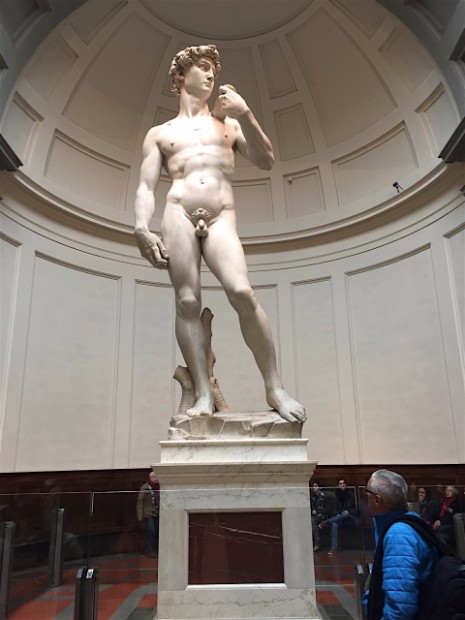
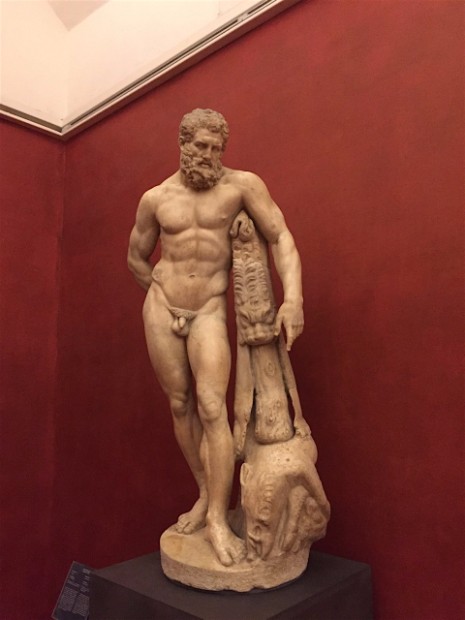
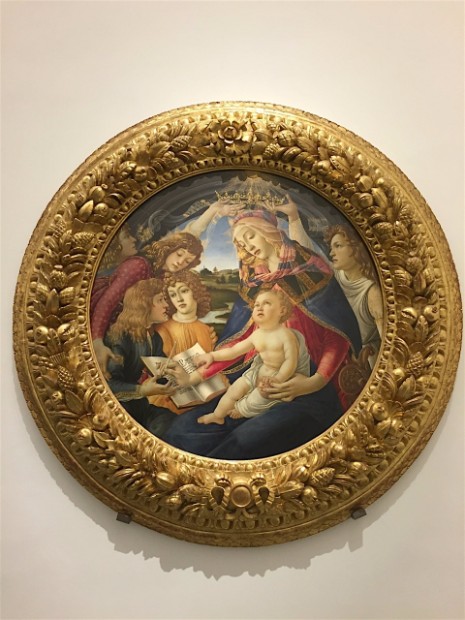
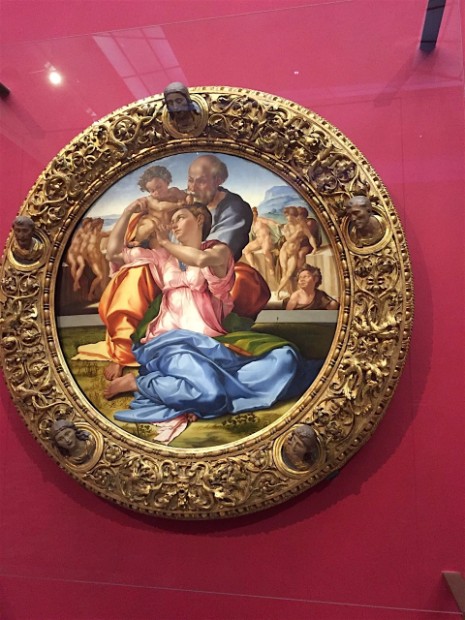

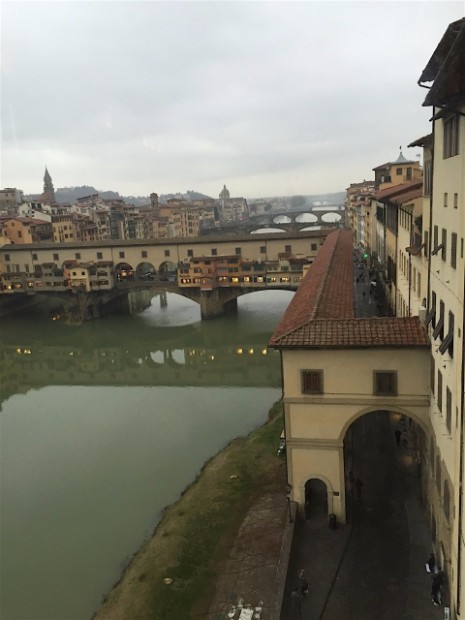
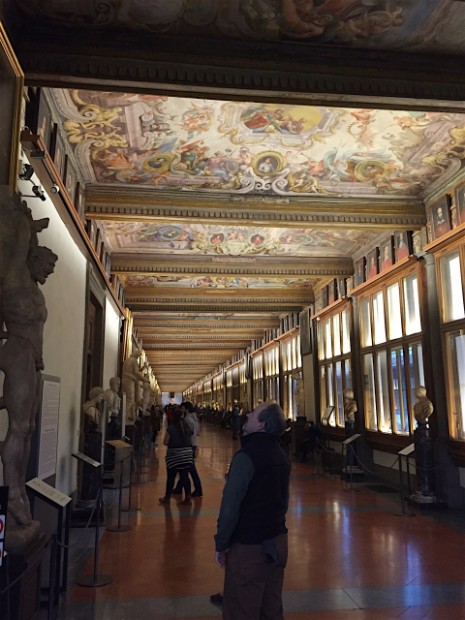
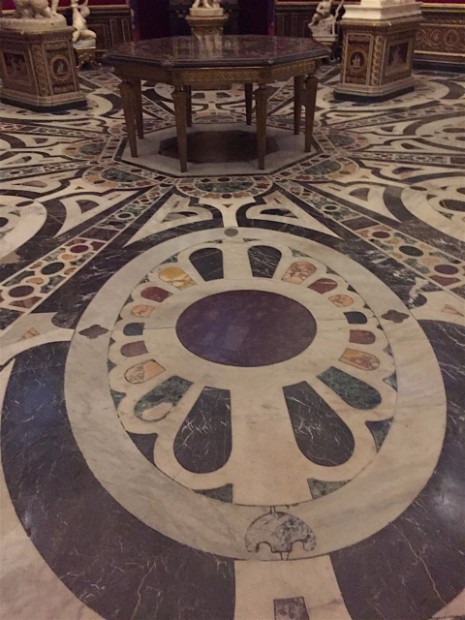
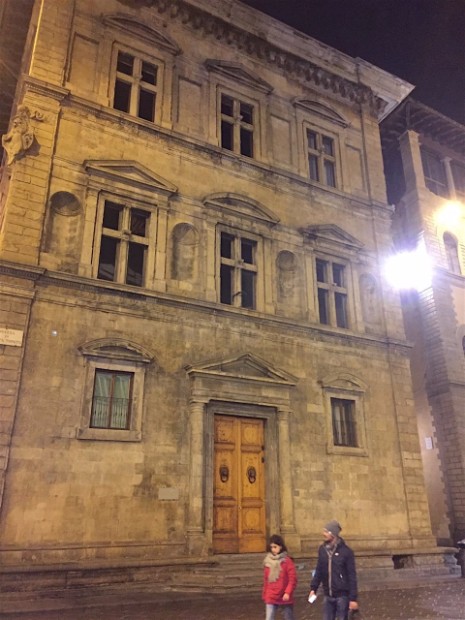
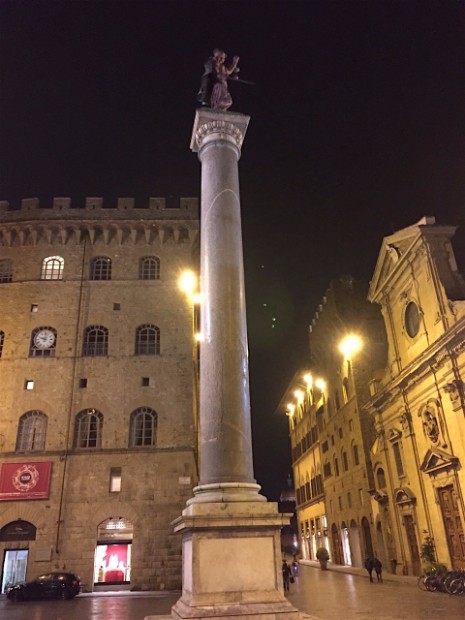

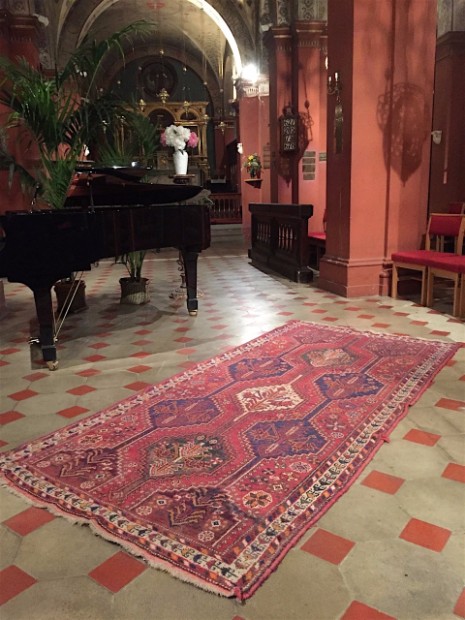
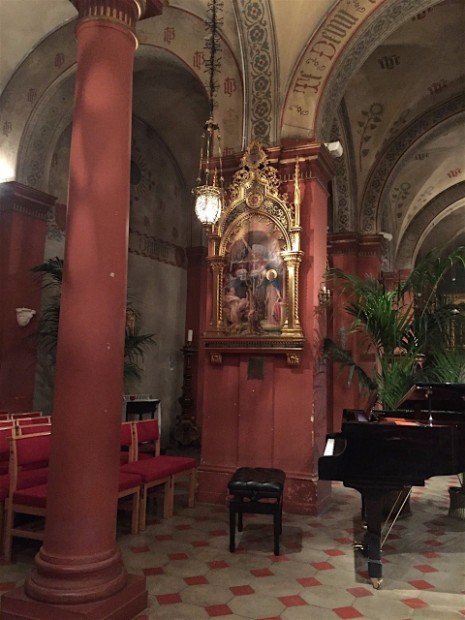
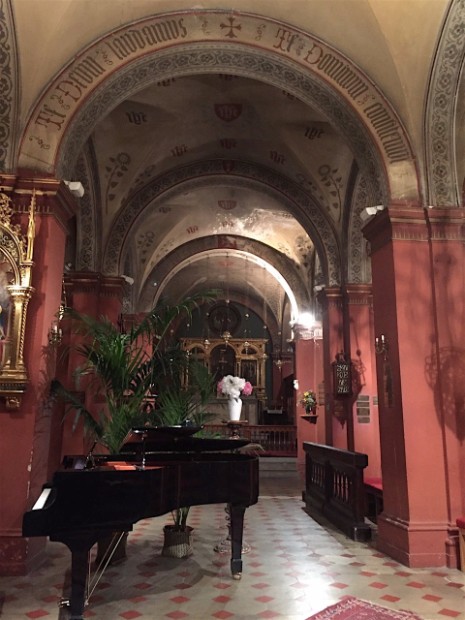

Leave a Reply
You must be logged in to post a comment.